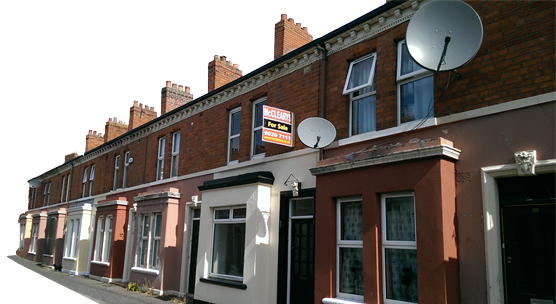Previously underpinned property insurance quotes for homes with subsidence history
If you have a home previously affected by a subsidence insurance claim or your property has been underpinned, buildings insurance quotations are not easy to obtain. Because the insurance market has always been cautious of changing insurer for an underpinned property, insurance has often been very difficult to obtain. Insurance advice for owners of underpinned property has historically been to stay with the insurer that paid the subsidence insurance claim and any new owners of the underpinned property would continue to insure with the same company. However, it is now possible to obtain cheaper underpinned property insurance quotes for underpinned homes as some insurers are changing their approach.
We can now offer insurance quotations for underpinned property and homes with subsidence history for all UK postcode areas
- Policies underwritten by a major UK based insurer
- Surveys normally only required for high risk postcodes
- Of the high risk postcodes only a third would normally need a new survey and in many cases an older survey can generally be accepted.
- Direct debit payment terms (subject to acceptance)
- Usual home insurance benefits and cover is available
Insurance cover for previously underpinned property is also available if your property is a holiday home or second home (or if you are working abroad with your main residence in the UK), for unoccupied / empty homes or if you are a landlord and your rental property has been affected by subsidence.
An online quotation for property affected by subsidence or underpinned property is not available as they are underwritten individually by the insurers according to your specific circumstances. Although we negotiate terms with a human underwriter at the insurance company, this doesn’t cost a fortune and we will be actively looking to reduce your premium for subsidence insurance for your property.
Subsidence in property – advice for home owners
What causes subsidence?
Subsidence is the movement of the ‘site’ or the ground upon which a house and its foundations sit, usually in a downward direction and being unrelated to the weight of the property itself. For example, if a house is damaged due to movement of the ground around it and the ground around it would have moved even if the house was not there, subsidence has acted. However, if the weight or design of the building has caused it to sink into otherwise unmoving ground, that is considered to be down to the building design or construction and is not defined as subsidence.
There are several main causes of subsidence in buildings:
- Trees and bushes have root systems, sometimes reaching great depths and surprising distances from the visible part of the plant as they travel beneath the surface in their search for moisture. They can damage a house foundations directly (look at what a climbing plant can do to a stone wall). However, the more common result is from the moisture they suck out of the soil. As the water within the soil is removed by the root, the soil contracts (like a sponge being squeezed out) and because it occupies a smaller space, it is no longer able to provide support to the property foundations, causing them to crack or break up. This is more prevalent in areas with clay soil as clay will suffer from the greatest expansion and contraction due to moisture content fluctuation.
- A drop in the water table due to a prolonged period of dry weather will have an effect, particularly in areas with a high concentration of clay soil. When the clay contracts, the foundations on which the house was built are left unsupported and the weight of the property bearing down on the unsupported foundations causes cracking and subsidence damage to the building.
- A water leak from a broken drainpipe or water pipe can wash away the soil from around the foundations. Sometimes left for many months or even years, this can be particularly damaging to the foundations of a property as they become unsupported, causing them to crack. Damage to underground service pipes can be caused by plant or tree roots seeking out moisture, age related deterioration of the pipes or even the weight of a vehicle on an unsuitably finished driveway and the pipes not being deep or strong enough to withstand the pressure.
- New paving or tarmac area’s next to a property can reduce the amount of water absorbed into the subsoil which means it dries out and may cause shrinkage (particularly in clay rich soil) of the subsoil which will affect the foundations. Beware if you are one of those householders currently engaged in the activity of ‘improving’ your front gardens with concrete and bricks!
- Shallow or inadequate foundations, particularly those in properties constructed pre 1930’s. The depth of the foundations of a property can vary – 1980’s houses can have foundations twice the depth of pre 1930’s properties as building regulations have been adjusted over the years as our understanding of the causes of subsidence has improved. However, as a general rule, provided a building has been constructed in accordance with the building regulations at the time of construction, an insurer will not use this as a tool to decline a claim.
- Other causes of structural issues in buildings include areas with a high gravel, sand (or even chalk) content in the soil or previous mining in the location which all have an effect on the soil’s stability.
How can I spot subsidence?
Subsidence damage can show itself in several ways making it relatively easy to spot.- Doors and windows in the property can start to ‘stick’ and the action of opening and closing them can reveal symptoms of subsidence. Many timber doors and windows in a property can do this anyway due to seasonal fluctuations in the moisture content of the atmosphere and this is an entirely natural process, so this is not in itself any reason to panic.
- Cracking appearing in internal plasterwork can be a sign of subsidence. These are obvious on painted walls but also look for damage or rippling effects under the wallpaper.
- Look out for cracks externally. New cracks, 3mm or over will generally indicate a structural issue of some type. Long standing and non-progressive movement is fairly common and not necessarily an indication that further movement will occur again in future, so if a crack has been present for many years without moving, it may be an historic structural settlement which has ceased completely. Movement (growth in length or width) of existing cracks in the property could be a sign of problems though.
What should I do if I think my house has subsidence?
Firstly, don’t panic as most damage to property caused by subsidence can be rectified.
You will need to check your buildings insurance policy as the peril of subsidence is standard on most insurances covering households. Commercial policies may be different and you need to check your policy cover.
Assuming that you have cover, call your insurer to advise them of the situation. The insurer will then set up a claim and will generally appoint a chartered surveyor or structural engineer to call and investigate the cause of the damage and what to do about it.
Subsidence is not something which will be repaired in a few weeks. It would be foolish to rush in and underpin a property which has suffered a small movement which has stopped again with little risk of further damage. It is therefore common for monitoring of the progression of movement to go on for months, sometimes up to a couple of years before a decision is made to either underpin, or just repair the visible damage because the movement has ceased. There is usually an amount to pay towards the claim called your policy excess. This will typically be between £1,000 & £2,500 depending on your area.




